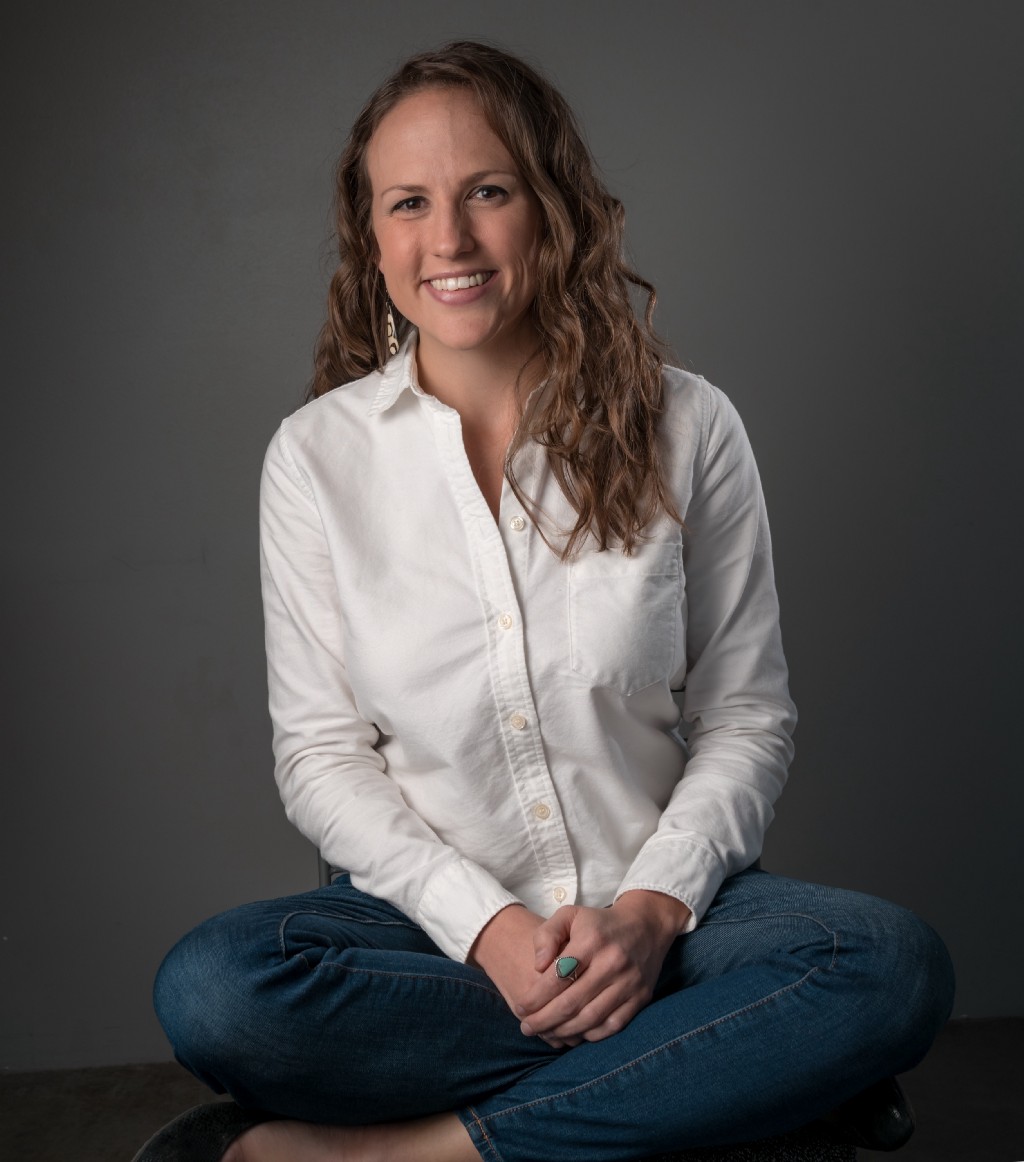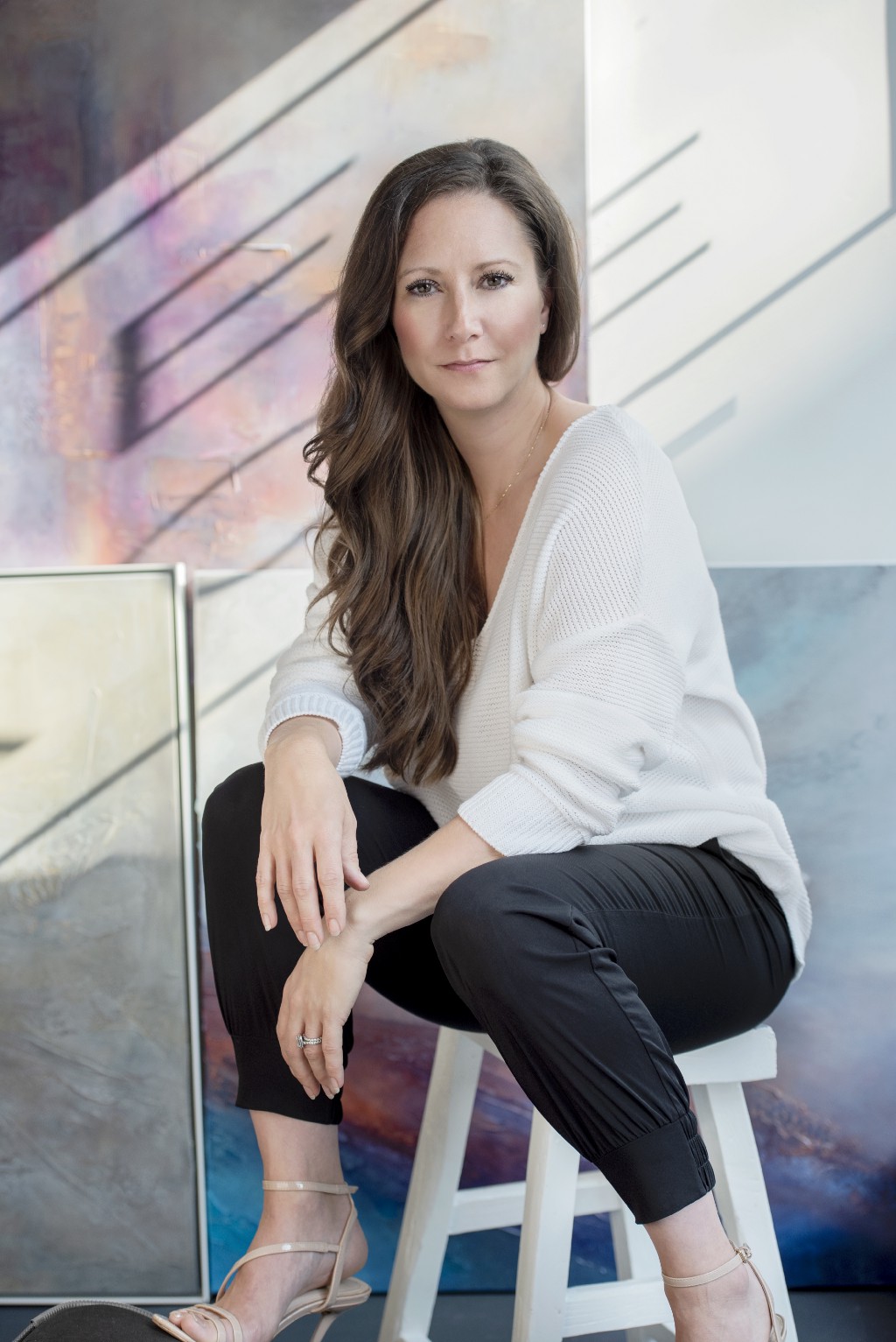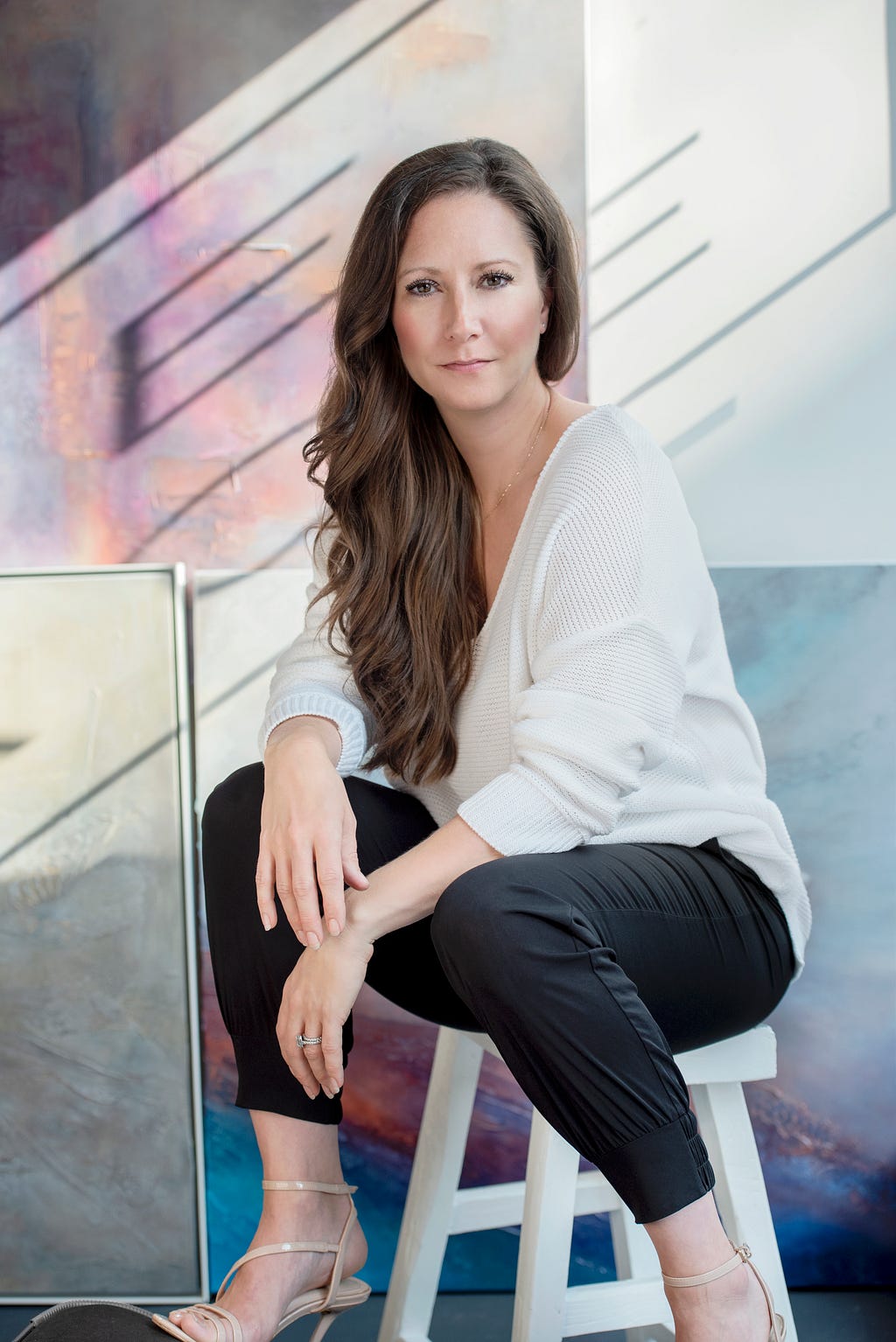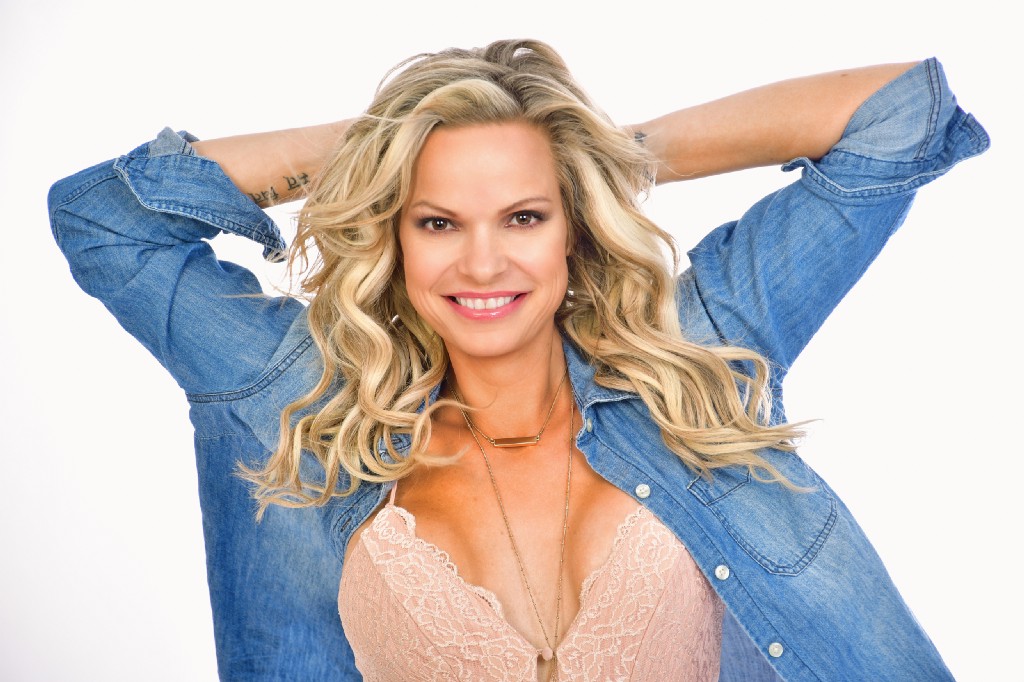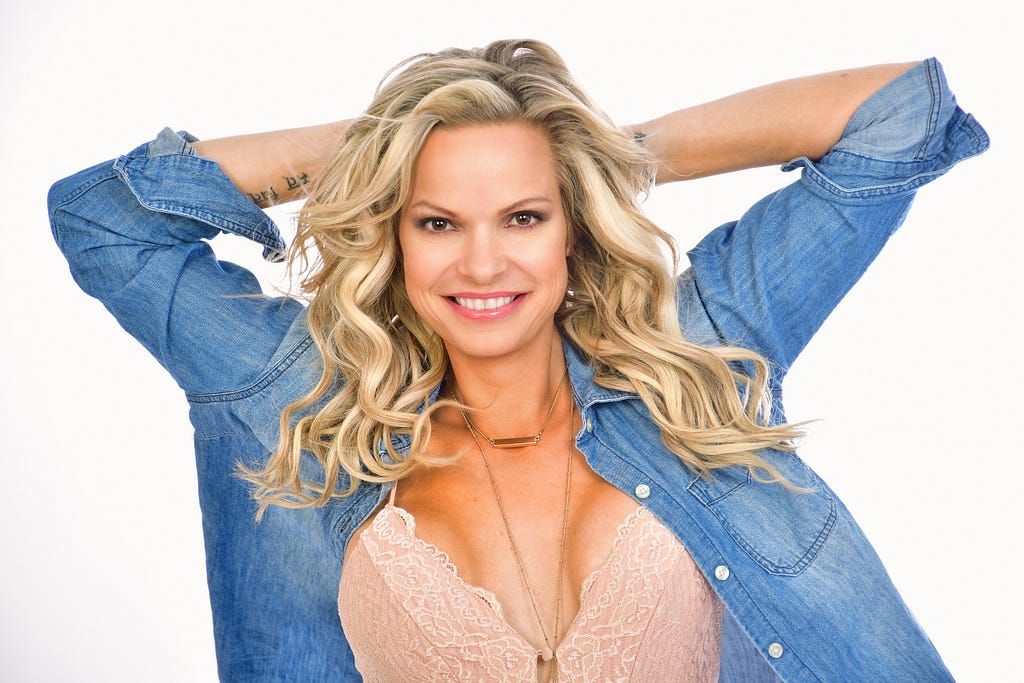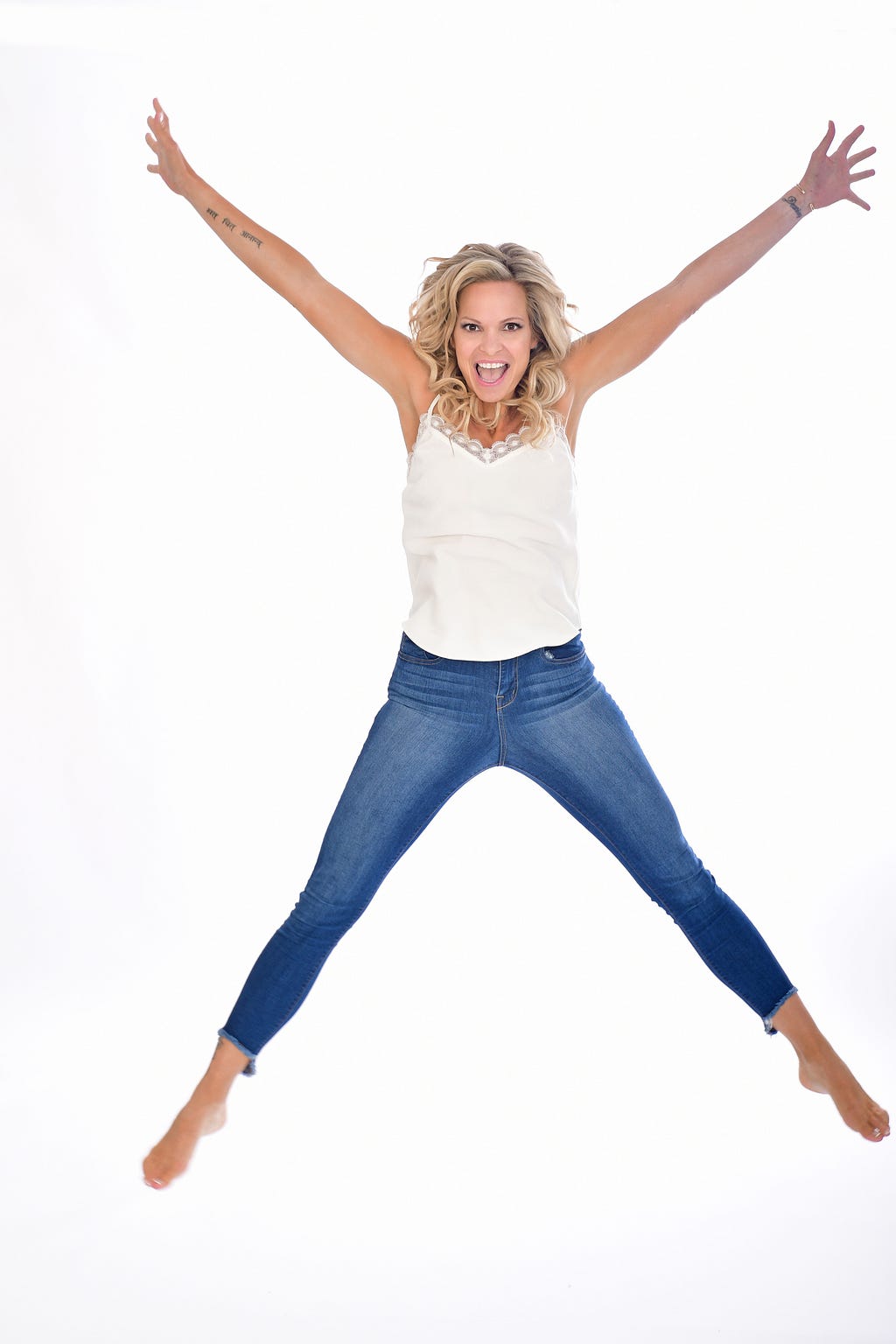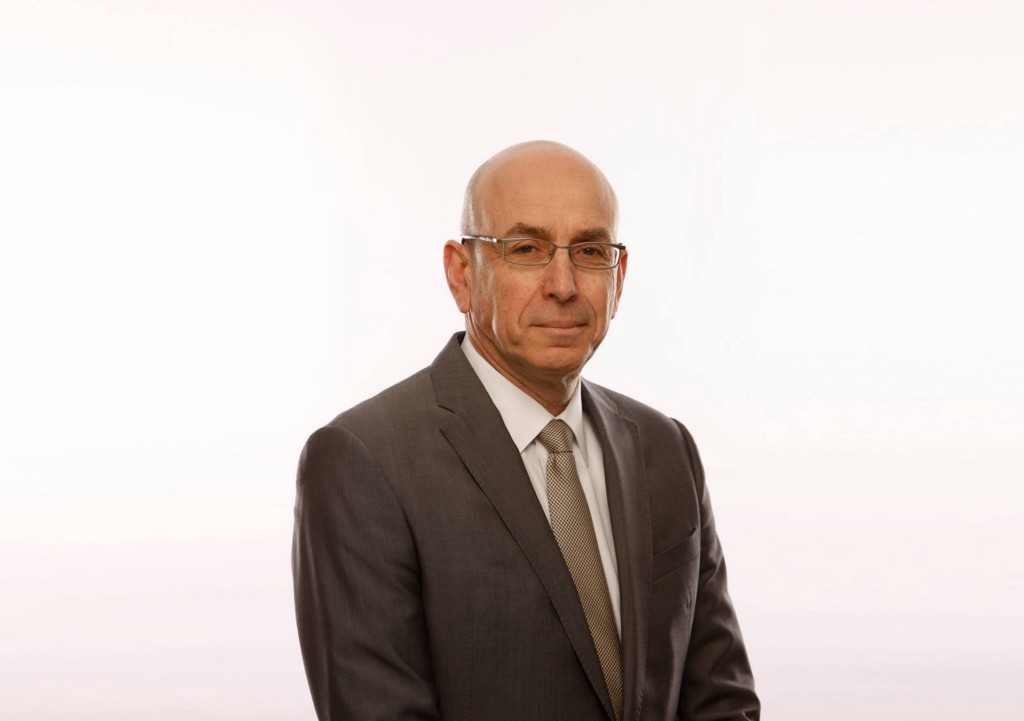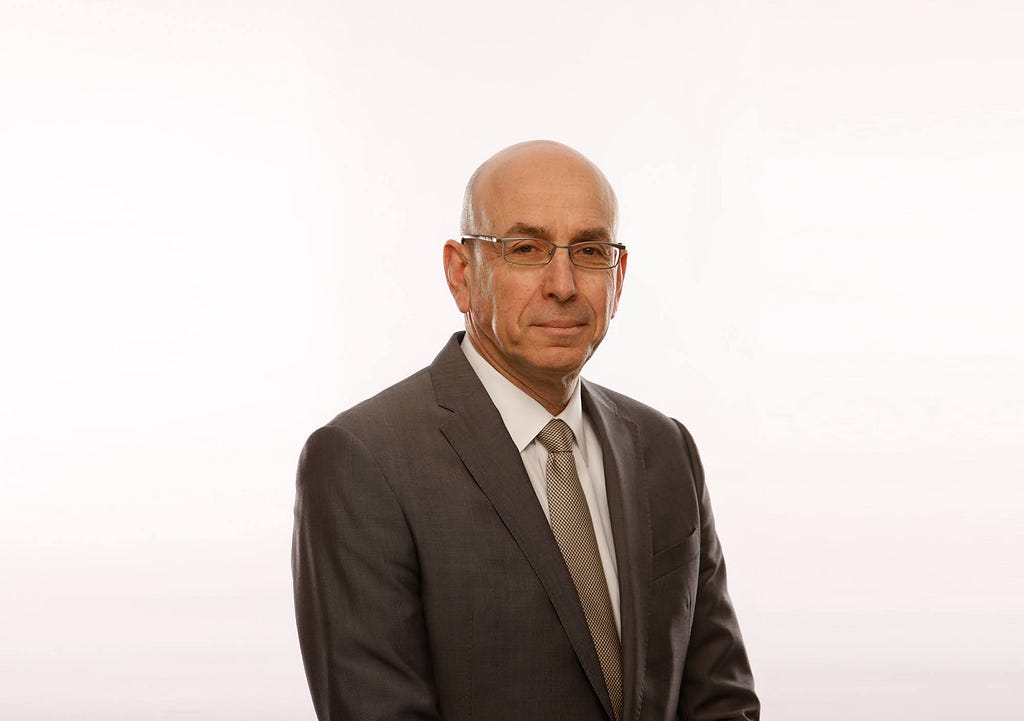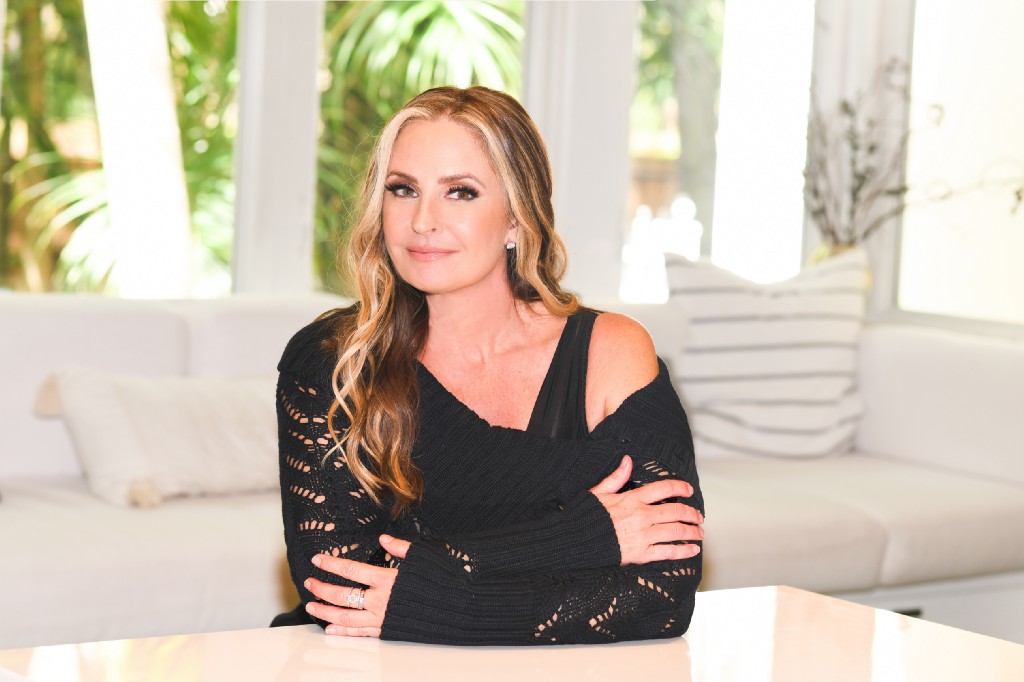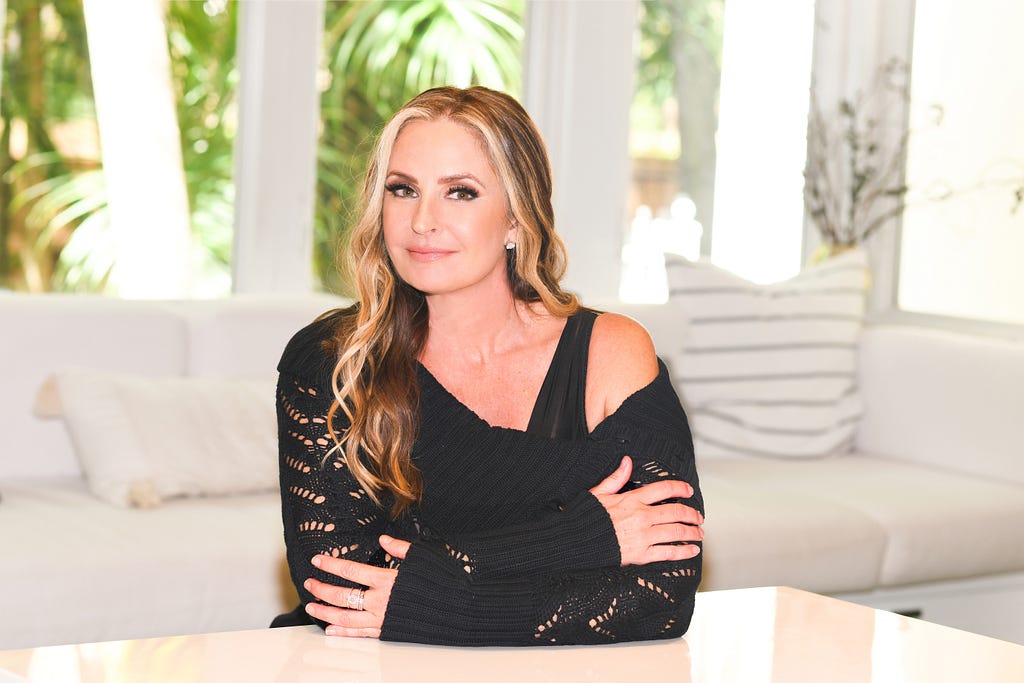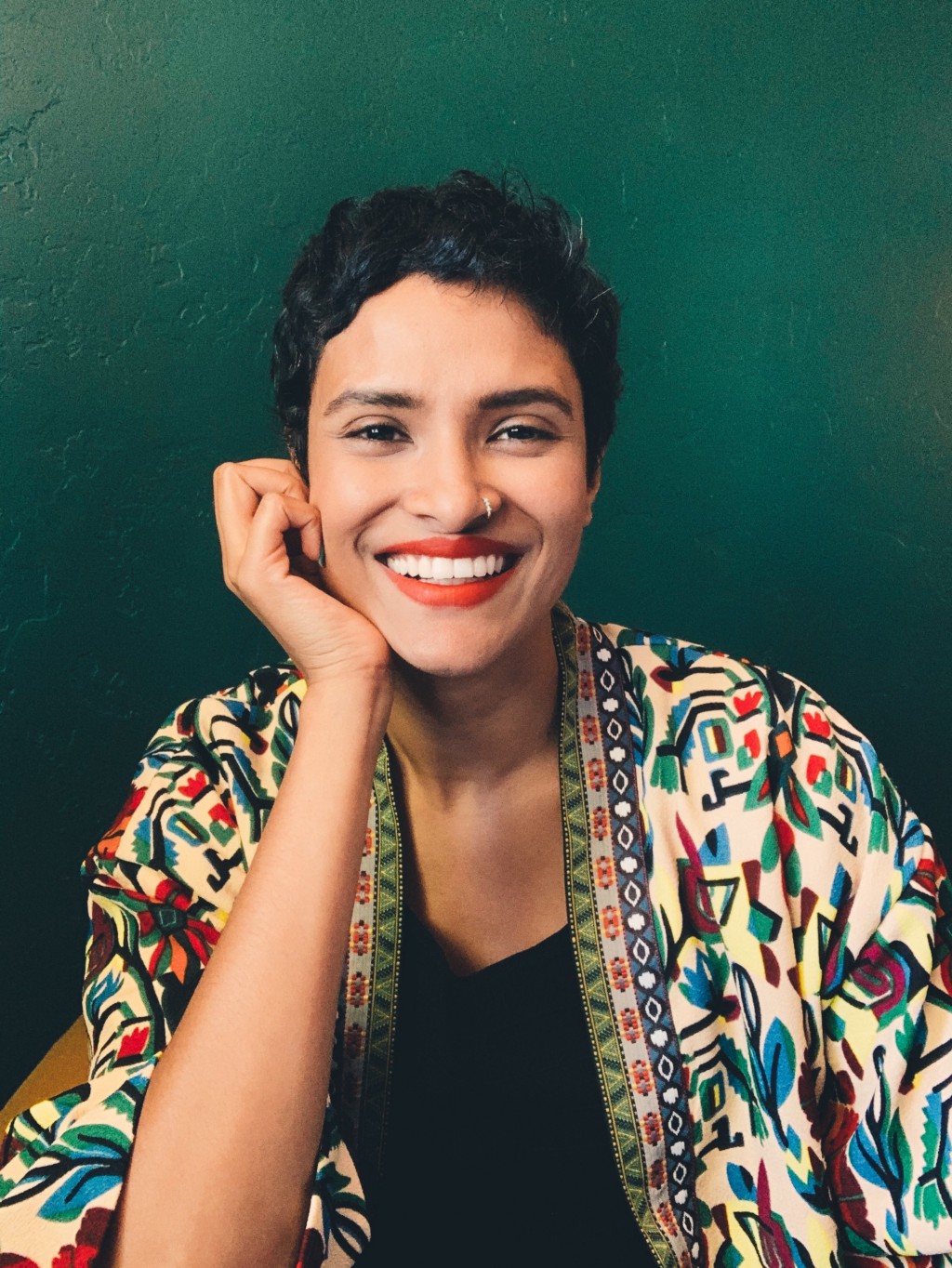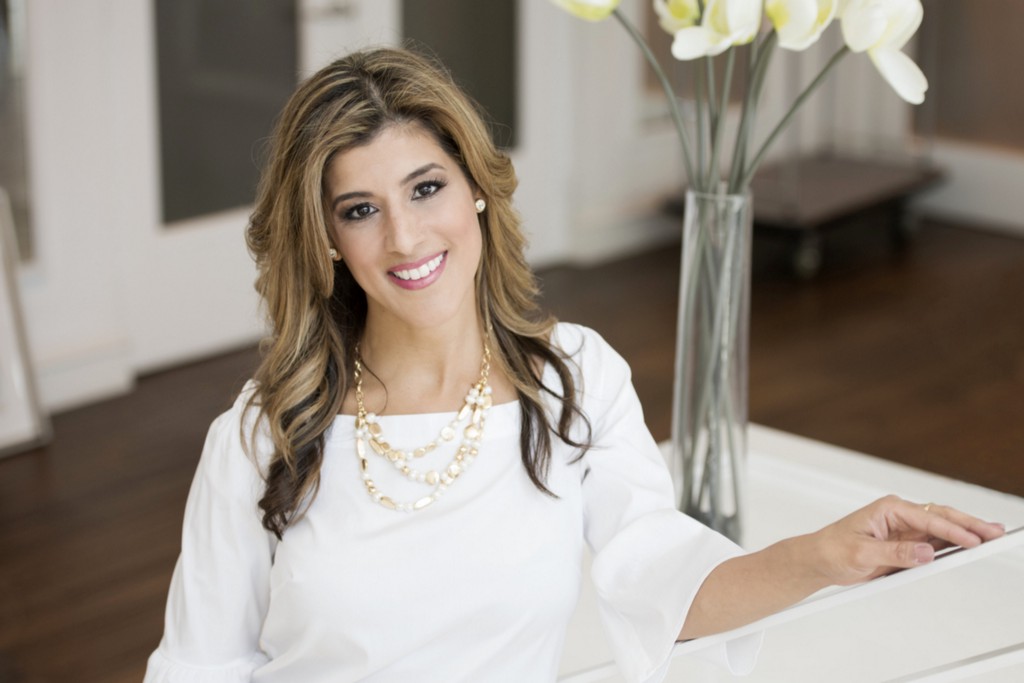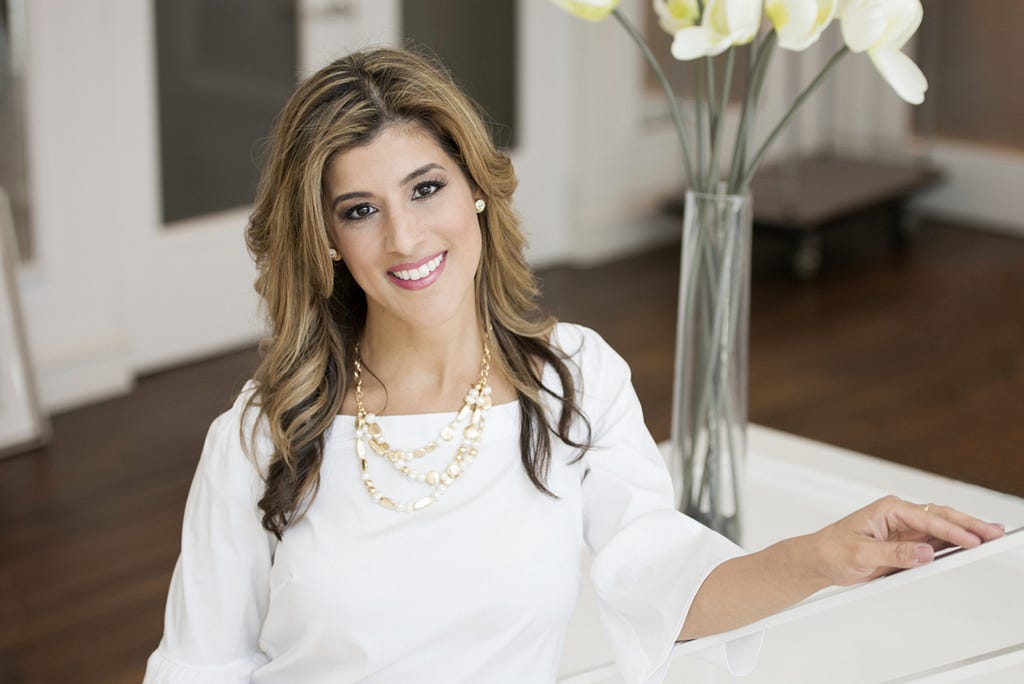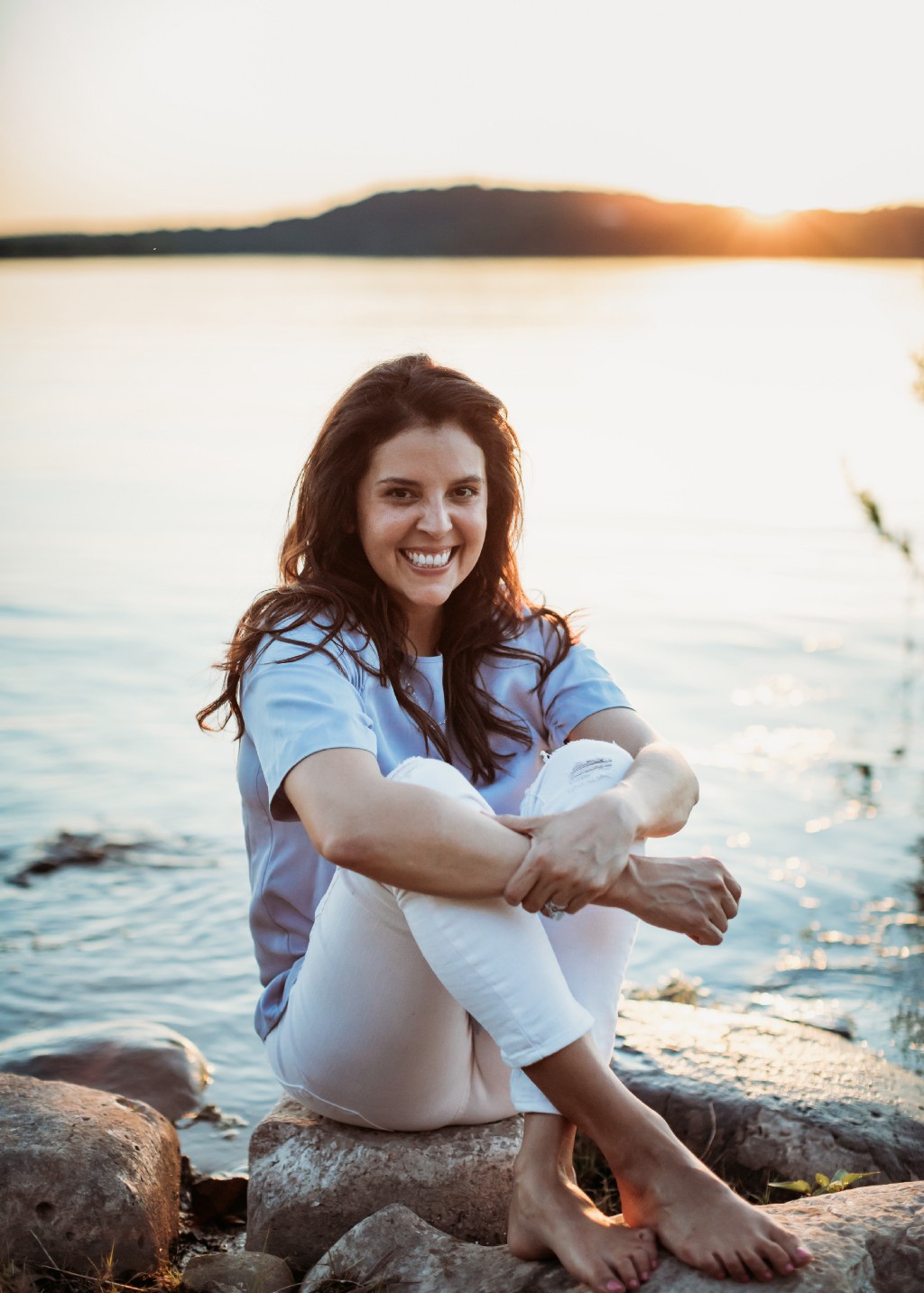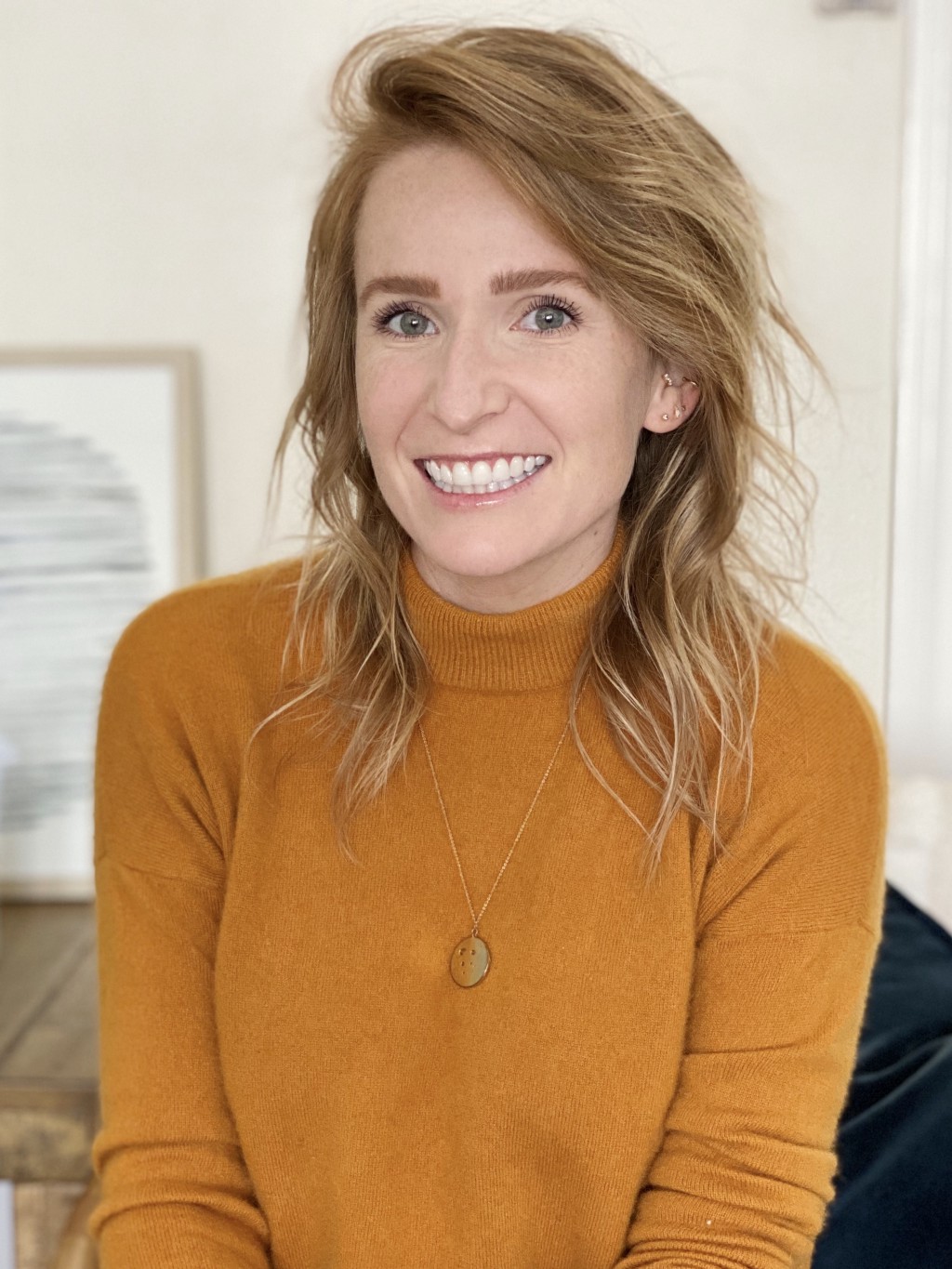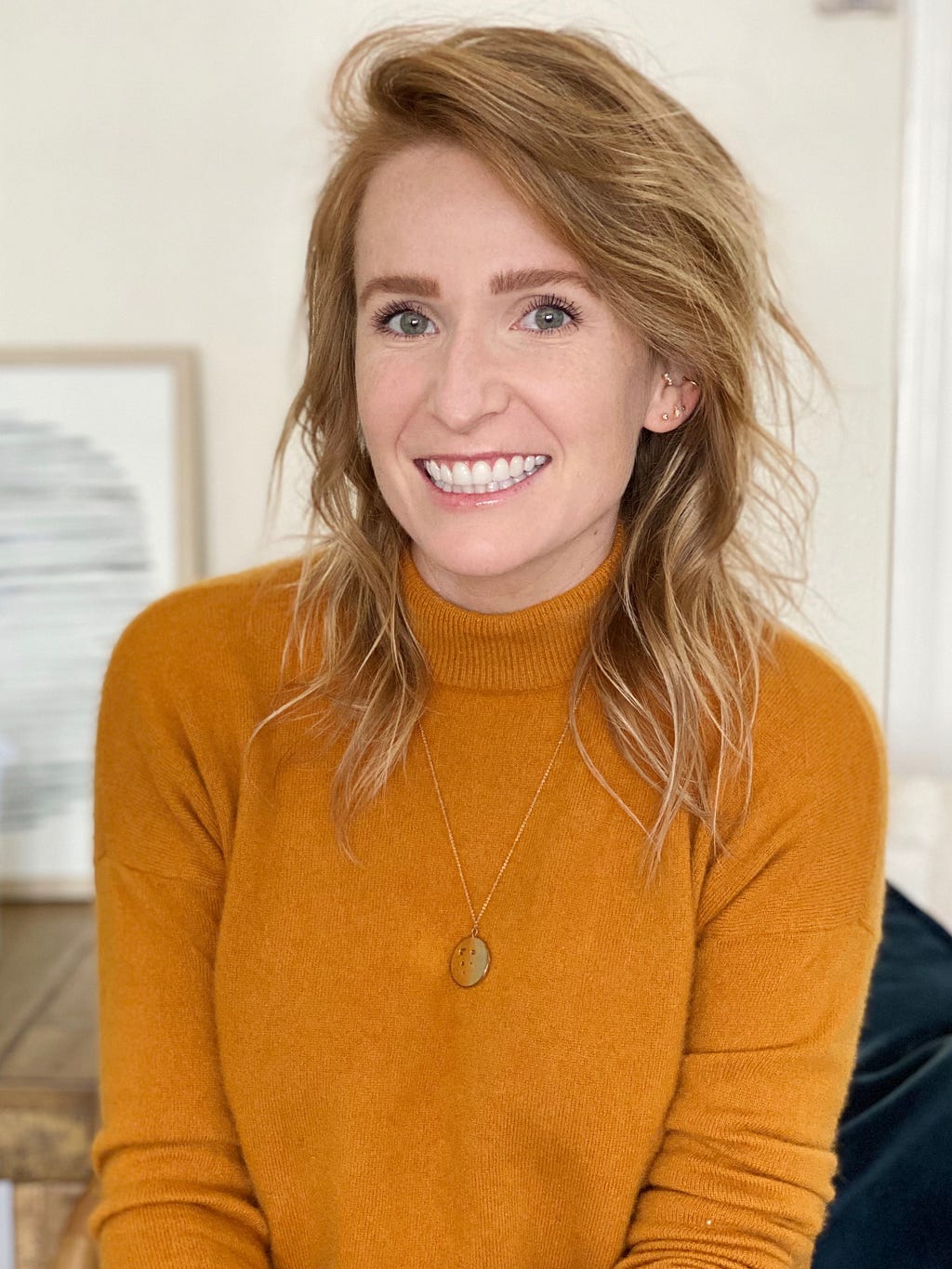
Take time each day to return to yourself. Intense world and national events, especially that impact you personally due to your marginalized identities, require a return to self. So often your senses will be outward and stressed while reading the news that remembering where we place our attention greatly impacts what we feel. Bring some attention back to yourself, back to your breathing, to noticing and caring for your emotions. You might notice that reaching out to someone helps lessen the separateness. Inquire with yourself about what might help and how you are doing.
As a part of my series about “How To Develop Mindfulness And Serenity During Stressful Or Uncertain Times”, I had the pleasure of interviewing Brittany Bouffard, LCSW, CYT.
Brittany Bouffard is a psychotherapist, speaker, and trainer in private practice helping professionals and millennials realize their enoughness. Brittany has worked and consulted clinically on three continents at universities, and in community mental health and nonprofits, providing expertise on mental health, mindfulness in psychotherapy, suicide prevention, and wellness in the workplace. As an LCSW (Licensed Clinical Social Worker), Certified Yoga Teacher and meditation teacher, and Somatic Experiencing Practitioner, Brittany supports authentic professional clients healing from trauma, loss, childhood pains, and anxiety to live as their most whole, authentic selves. www.BrittanyBouffard.com
Thank you so much for doing this with us! Our readers would love to “get to know you” a bit better. Can you share with us the backstory about what brought you to your specific career path?
My pleasure! I started with a journalism degree hearing people’s stories. Therein I realized my empathetic nature pointed me to change the way I heard stories from reporting to psychology, which meant missing out on beloved writing and editing, but allowed me to shape my career by what I found most fulfilling: healing people’s hurt and discovering our resilience. Also, I luckily found extensive hatha yoga practice in college, which then led me to Buddhist studies and mindfulness practice. During graduate school I also became a yoga teacher, which both expanded my own yoga practice and opened up to me the world of how body-based our mental health and well-being are linked. There was a lot of listening to my early life passions and gut to steer my work toward what felt like the truest me.
Can you share the most interesting story that happened to you since you started your career?
More than a decade ago when I arrived at my university post-graduate fellowship, my supervisor told me part of his interest in my application had been the mindfulness and yoga I incorporate into clinical psychotherapy work. He thought this was the next wave in the field. And he was right! That’s not just due to popularity but from the vast amounts of research in psychology and other fields the ten years prior that showed the immense effectiveness of mindfulness for everything from chronic pain to emotional wellbeing. So I suppose one of the most interesting aspects of my career has been exploring integration of mindfulness with psychotherapy and seeing the incredible outcomes my clients experience. I created a therapy group that even melds yoga with a traditional talk therapy group for various clinical concerns. Clients love it as do I! And it proves very useful in clients better understanding how their body as well as cognitive brain benefit from new coping strategies for anxiety, depression, body image, enoughness, etc.
What advice would you give to other leaders about how to create a fantastic work culture?
While yes work is about the product, the design, the collaboration, or whatever the goal, in order to create a productive and healthy work environment, people must that the health and happiness of the workplace determines your final product, retention and bottom line. Happy employees make better product faster and with less days missed and fewer complaints. Get to know what your employees need: truly offer them appreciation in forms of promotions or raises or that air hockey table they want; bring in someone to teach them how to be a happier employee, to deal with the pressures and stressors. And when employees feel empowered to look at their needs at work and understand how to meet them effectively, there is more natural motivation and dedication to the outcome.
Is there a particular book that made a significant impact on you? Can you share a story or explain why it resonated with you so much?
Thich Nhat Hanh’s “Peace is Every Step” is my most beloved book of all time. It is a beautiful introduction to the big and small ways of practicing mindfulness and wisdom about coping with hard things. I always recommend it to clients. The digestible tiny chapters also offer a perfect morning ritual of reading an entry each morning while you sit and drink your tea. The key to mindfulness is often in the simplicity, and the beloved Vietnamese Zen teacher Nhat Hanh demonstrates that.
Ok, thank you for all that. Now let’s move to the main focus of our interview. From your experience or research, how would you define and describe the state of being mindful?
Mindfulness is being present and aware, with non-judging curiosity, to whatever is happening right now. It is the opposite of running on autopilot, where you are less keenly aware of yourself and your surroundings, your needs and others’. You could say the state of being mindful is noticing your state of being! Generally you might zoom through your day unaware of underlying emotions, hunger, stress, joy, etc, so becoming more mindful in a moment is tuning into what state you are in, as well as noticing outside of you. Being mindful is where you find choice and freedom, true self-care and attunement to self and others.
This might be intuitive to you, but it will be instructive to spell this out. Can you share with our readers a few of the physical, mental, and emotional benefits of becoming mindful?
Countless volumes of research have proven the extensive benefits of being more mindful in life, in all these categories. Studies have found improvements in sleep quality, immune system response, stress hormones, eating habits, stress coping, substance use, some stress-realted disease outcomes, and many other physical benefits with mindfulness practices. Also mindfulness is proven to strengthen compassion, attention and focus, awareness, acceptance, emotional intelligence and emotional coping, among other psychological benefits.
Many clients of mine over the years have also reported improvements in close relationship dynamics; anxiety symptoms; negative self talk or negative sense of self; unhelpful internal beliefs around pressures and expectations; coping through grief or loss; workplace interactions; etc.
Ok. Here is the main question of our discussion. The past 5 years have been filled with upheaval and political uncertainty. Many people have become anxious from the dramatic jolts of the news cycle. The fears related to the pandemic have only heightened a sense of uncertainty, anxiety, fear, and loneliness. From your experience or research what are five steps that each of us can take to develop mindfulness during such uncertain times? Can you please share a story or example for each.
1- Take time each day to return to yourself. Intense world and national events, especially that impact you personally due to your marginalized identities, require a return to self. So often your senses will be outward and stressed while reading the news that remembering where we place our attention greatly impacts what we feel. Bring some attention back to yourself, back to your breathing, to noticing and caring for your emotions. You might notice that reaching out to someone helps lessen the separateness. Inquire with yourself about what might help and how you are doing.
2- Make time for pausing. Whether you sit on a cushion each morning, or you pause while your coffee brews and just stand breathing & noticing, these are practices in mindfulness. Wait in line without pulling out your phone. Journal to check in with your emotions or stressors. All of these are opportunities to tune into yourself in the present moment, without running for a distraction or bouncing to something else out of habit. You can create real & poignant self-care when you are present enough to realize what you need and not, then to offer it to yourself. Without pauses through the day to bring attention, the benefits rarely become reality.
3- Slow down every day to take a break. Take time to feel time move, slowly. Lay on your floor between meetings, or do chores slowly and with present awareness. Carve out time especially between events or tasks to stop and sit in your chair without doing so instead be there, notice if the hours have flown by so far today and just try feeling the rise and fall of your torso from breathing. Taking a real break helps break the cycle of autopilot that can feel like living a robotic yet frenzied life.
4- Tune into your senses more. Enjoy a meal or snack and try to notice the textures, flavors, temperatures, and movements of your jaw, without the distraction of work or TV. Listen to sounds outdoors as you walk the dog. Notice physical sensation of the shower or warm socks. Most peoples’ thinking mind stays so busy during these basic moments that you miss the experiences in front of you, which, at the end of life, made up so much of your life. During pauses and slow down breaks, ask yourself what your senses take in, and really try to be present to them.
5- Get present with the pleasant. There is already much difficulty in the world. Sometimes extra dissatifaction or unhappiness comes from not being fully present to the times of pleasantness. When you aren’t aware of the good, how can you soak it in? Let your system integrate joy and pleasure and smiling by paying new attention to when things are good. Even a basic self-narration moment noting to yourself when you’re enjoying your friends or a nice walk can bring you back to the wonders of that fleeting experience and have you not miss the goodness by being in your head or planning what is next.
From your experience or research what are five steps that each of us can take to effectively offer support to those around us who are feeling anxious? Can you explain?
1- Validate that times are anxious. You might feel similar anxiety yourself or can understand at least that when the world feels in upheaval, anyone could feel anxious. Share this with your anxious other. It may or may not be helpful for them to know you also feel some worry. Be sure to keep it about them and not toss the spotlight to yourself.
2- Understand how identities affect anxiety experience. Someone you care about might hold certain intersecting identities that are under attack at any time, whether on a national scale and/or in a daily way. If a friend is speaking about anxiety from their marginalized perspective, listen and validate how particularly scary this time is. Especially if you do not share the particular identity(ies), listen without judgement or offering solutions. Explore ways to be a dependable ally.
3- Don’t minimize. Sometimes we feel uncomfortable when someone close to us is anxious. We want to fix it, make it go away for them. This can sound though to the person like their anxiety is not real if something is said like, “it will be fine,” “don’t worry about it so much,” or “you’re just anxious.” Even if the anxious thoughts are irrational or unhelpful, which they often are, be sure to show someone you are listening and apprecaite it is tough.
4- Ask what they need. The person might not know what would be helpful and just feel stuck in an anxious place. And it is not your job to fix this. Yet, some people have ideas of what would be most or least helpful. Provide the space for that person to share, letting you be a trustworthy person who will hear them and try to follow through.
5- Encourage professional support. In these times it is especially wise to seek professional help, particularly if you see your loved one’s anxiety staying very impactful for them in a daily or weekly way. Try to normalize the idea of professional help from a therapist if the person doesn’t already have one. Therapists can share wonderful coping tools for helping times be less overwhelming.
What are the best resources you would suggest for someone to learn how to be more mindful and serene in their everyday life?
Undertaking a mindfulness practice from scratch can feel confusing of exactly what to do or try. There exist countless fantastic resources if you would like guidance on how to start meditating or how to bring mindfulness into your daily life. Books, podcasts, retreats, and some apps can be wonderful teachers. Respected teachers like Tara Brach, Thich Nhat Hanh, and Jack Kornfield are my favorite recommendations and can all be found through a mix of books, podcasts, YouTube guided meditations and talks, and retreats.
Can you please give us your favorite “Life Lesson Quote”? Do you have a story about how that was relevant in your life?
Thich Nhat Hanh wrote, “Breathing in, I calm body and mind. Breathing out, I smile. Dwelling in the present moment I know this is the only moment.” This highlights the simple, accessible beauty of mindfulness, which can be noticing a breath, a moment in time, or your smile.
You are a person of great influence. If you could start a movement that would bring the most amount of good to the most amount of people, what would that be? You never know what your idea can trigger. 🙂
Mindfulness as a personal practice, both for the simple profound experience of being present and also for increased awareness to improve way of living. This could mean increased attention to emotions, to self-talk, to substances, to food, etc. Practicing in such a way you not only notice what is but kindly invite new ways of experiencing yourself that could increase your wellbing.
What is the best way our readers can follow you online?
Visit me at: https://www.BrittanyBouffard.com and sign up to follow my posts tailor-written for authentic professionals and millennials.
Instagram: @AuthenticProfessionalsTherapy
Psychology Today: https://www.psychologytoday.com/us/therapists/brittany-bouffard-denver-co/365853
(this is like therapist social media!)
Facebook: Brittany Bouffard Psychotherapy
LinkedIn: Brittany Bouffard (psychotherapist)
Thank you for these fantastic insights. We wish you only continued success in your great work!
Brittany Bouffard: How To Develop Mindfulness During Stressful Or Uncertain Times was originally published in Authority Magazine on Medium, where people are continuing the conversation by highlighting and responding to this story.


